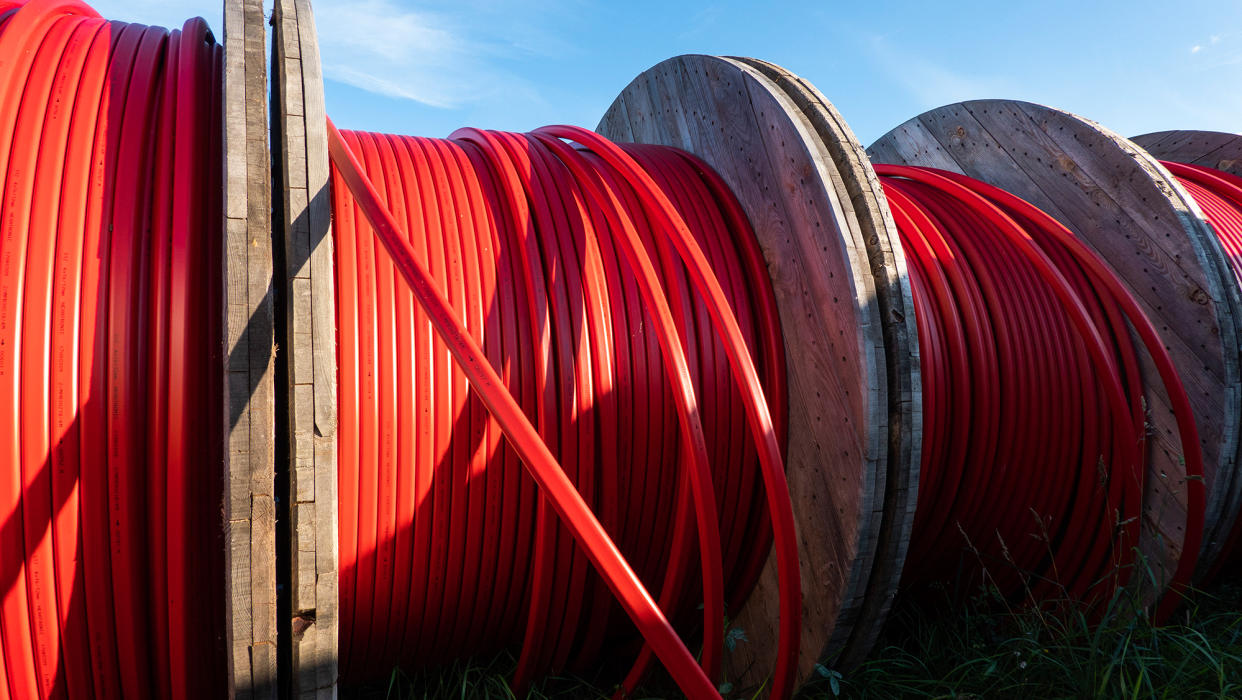Does the Telecom Industry Have an Exxon Valdez-Scale Problem on Its Hands With Toxic Lead Cables?

A week ago, The Wall Street Journal ran a stunning exposé revealing that cables laid down by telecom companies including AT&T and Verizon Communications decades ago are lined with lead, and that lead is potentially leaching into the ground.
By the WSJ's count, around 2,000 cables around the U.S. match this dangerous criteria.
In the past week, by equity analyst Craig Moffett’s accounting Monday, AT&T, Verizon, Lumen and Frontier Communications have lost a combined $18 billion in market capitalization for a weighted average decline of 6.4%.
Said industry trade group U.S. Telecom in a statement: “Many considerations go into determining whether legacy lead-sheathed telecom cables should be removed or should be left in place, including those regarding the safety of workers who must handle the cables, potential impacts on the environment, the age and composition of the cables, their geographic location, and customer needs as well as the needs of the business and infrastructure demands. The U.S. telecommunications industry stands ready to engage constructively on this issue."
With the story still reverberating around the media ecosystem, the equity analysts for another bank, TD Cowen, said it's too early to assess the long-term damage to telecom companies.
"While 2,000 cables sounds very manageable, we do not know the breadth of WSJ sample size; meanwhile the article notes that Telcos have previously acknowledged ‘some older metropolitan areas may still have over 50% lead cable,‘ suggesting the amount of lead-encased cables could be enormous,” reads a letter from TD Cowen's Gregory Williams sent to shareholders Sunday.
“If so, the cost could be in the tens of billions of dollars,” the letter continued. “We don’t believe the lead-sheathed cables were pervasive in last mile access networks, but perhaps used in aggregation trunk cables, essentially throughout the country.”
For the executive decision-makers at telecom companies, here's where the TD Cowen report got really scary.
“While many of the cables are not in use, and we suspect ownership of the cables will be hotly debated, we believe all the notable legacy ILECs will be in the conversation given AT&T’s breakup in 1984 into the seven RBOCs,” TD Cowan said. “When we consider other catastrophic environmental settlements, some coming to mind include the BP Gulf oil spill for $20.8 billion, the 3M ‘forever chemicals’ for $10 billion, or Exxon Valdez (criminal and financial).’
Another report, sent from MoffettNathanson senior equity analyst Moffett Monday morning, indicates just what a surprise the issue was … to pretty much everyone.
“In our combined decades of covering and/or consulting to the industry, we had never previously encountered the topic of lead in telecom networks,” Moffett wrote. “But at least we’re in good company; per the Wall Street Journal, four former FCC commissioners that it interviewed weren’t aware of lead in these networks, either.”
U.S. Telecom agrees: “We have not seen, nor have regulators identified, evidence that legacy lead-sheathed telecom cables are a leading cause of lead exposure or the cause of a public health issue," the group said.
Again, at this point, there’s no way to accurately assess the size of the problem.
“The WSJ identified some 2,000 lead-sheathed cables, but admitted the actual number could be orders of magnitude higher,” Moffett wrote. “Neither they, we, nor anyone else with whom we have spoken has any real idea what’s out there. Some of these cables have been removed, some have been abandoned in place and some are still in use. We’d be shocked if the carriers even had accurate, comprehensive records regarding the presence or location of all lead cables in their networks.”

